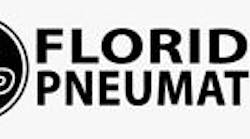Q: How can I maximize the performance of my air tool?
A: An air tool is powered by either a rotary vane air motor (most tools), or a reciprocating air powered piston/cylinder (air hammers and saws). Air tool manufacturers all design their air tools to operate at 90 psi constant air pressure. The torque levels, free speed ratings or blows/minute are established by the manufacturer by testing the tool at the same 90 psi constant air pressure. To obtain the correct constant air pressure, the pressure regulator at your compressor should be set at 90 psi while the tool is running. For all air tools other than 3/4” and 1” impact wrenches, the quick release coupler and studs should be 1/4” NPT and the internal hose diameter should be 3/8” with a maximum length of 25’. Using a 1/4” diameter hose will reduce the tool efficiency by 45 percent. For each additional 10’ of hose length over 25’, the tool efficiency with reduce by approximately 8 percent. For 3/4” and 1” impact wrenches, the quick release coupler and studs should be 3/8” NPT, and the internal hose diameter should be 1/2”. The same efficiency drop will occur by using hose lengths in excess of 25’ or less than 1/2” inside diameter hose.
Information provided by: Florida Pneumatic Mfg. Corp.



